Email marketing for real estate agents and brokers can be a great way to sell more homes and properties.
The customer journey can be long in real estate, and your email list is a valuable tool to nurture leads and convert them into customers and get those coveted word-of-mouth referrals.
It will take more than just emailing out current listing information to your list.
You need to engage your list with interesting and helpful content that will keep them opening your emails and encourage them to share your content with others.
This is where many real estate agents and brokers fail with their email marketing. They don’t take the time to develop an email marketing strategy that their list will find valuable.
People entrust their largest purchase to real estate agents they know, like, and trust.
In this article, I’ll break down everything you need to know about email marketing for real estate and give you 8 email tips to help you sell more homes.
Elements of An Effective Email Marketing Campaign For Real Estate
To get better email marketing results, you must find out what makes an effective campaign in the first place.
An effective email marketing plan has the following elements:
Personality.
The personality of the brand should be reflected in your email marketing communications.
From the email copy’s tone and voice to the newsletter’s designs and templates, you must incorporate them into your newsletter.

Recognizability.
With your brand’s identity sorted out, a real estate agent’s email must create a sense of familiarity with your audience.
What would you like your newsletter to be known for?
Finding fixer uppers, area knowledge, or maybe you’re known for your luxury listings?
Think about what would make someone want to open your email.
Your reader must be able to identify your business easily and know the value they’ll get from your email in the first few seconds.
Consistency.
The key to a memorable email is consistency.
Your newsletter should be consistent with your website and other platforms where your business exists.
To do this, it is essential that you develop a brand guideline that will apply to all your marketing channels.
Uniqueness.
Think of creative ideas to make your email stand out.
The competition is intense in your customers’ inboxes.
You have to find what makes you different from the competition.
Authenticity.
Nothing resonates more with a reader than a genuine brand message.
Strive to create content that deviates from a continuous sales pitch and offers more value to your audience.
Also, consider building a strong personal brand to break up the walls between you and your customers effectively.
It will help if you come across as likable in your email communications.
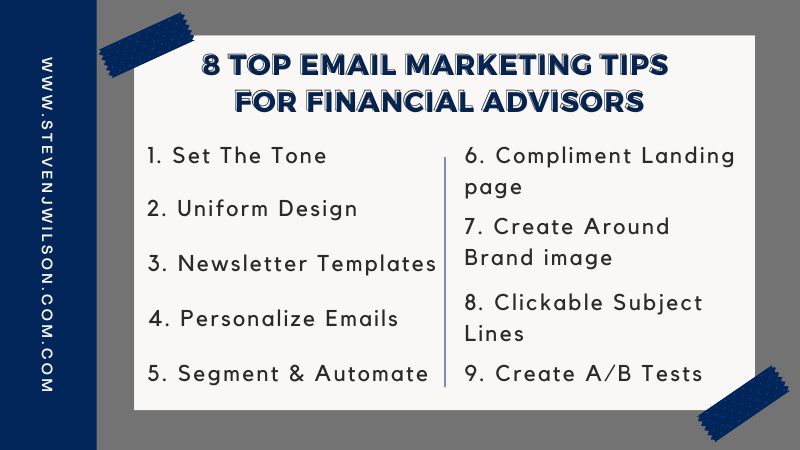
Grow Open Rate and Conversions with These Email Marketing Tips for Real Estate
Do you incorporate all elements of an effective email campaign?
If not, or if you feel you need to improve- it is time to apply these eight actionable tips.
1. Establish tone and voice
An effective email campaign involves writing compelling copy.
And in email copywriting, you have to think about how you would talk to your customers that resonates with their desires, fears, and needs.
Your tone and voice in your email marketing communications will determine how well your message is received.
Should your brand be friendly or serious? Should you be conversational or formal? Should you be funny or matter-of-factly?
When writing the email copy, establish your email’s tone and voice based on your brand’s personality. Then, stick with it.
The most important thing about this tip is to be consistent.
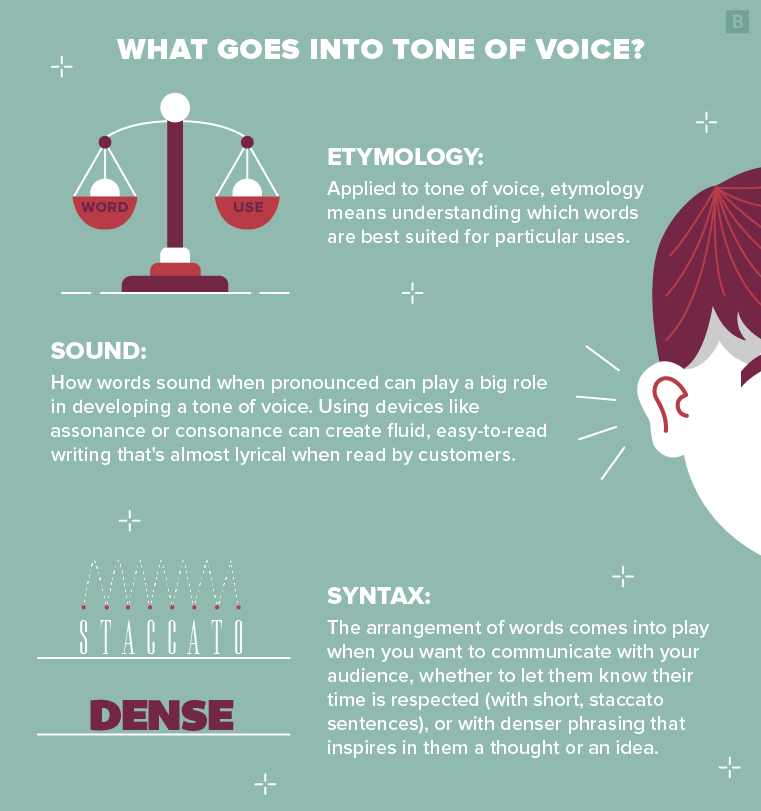
The voice of your email should match your succeeding emails, your website, your social media, and the other platforms where your business has a presence.
On the other hand, your tone may adjust to what’s appropriate for a specific message, given that it still adheres to your brand guidelines.
A consistent tone and voice create a memorable email copy. And being memorable is one way to build brand awareness.
2. Work on a uniform design
Aside from copy, real estate agents should also work on creating a uniform design.
Design and copy make your brand identity, and they should go together.
For example, if you are writing in an authoritative voice, the design of your newsletter should use more professional-looking colors and images.
If you are using a cheerful voice, you can be more playful with your fonts and color schemes.
Again, the key here is consistency.
Remember that you are building your business’s brand identity as a real estate agent.
You would not want to confuse your readers with email designs that do not match the copy.
It pays to develop a branding guideline to achieve consistency in your email.
This makes it easier for even outside designers and copywriters to make memorable emails that are true to your branding.
3. Create newsletter templates
Templates streamline the email creation process and are an essential brand asset.
And they do not just save you massive time.
They also build the foundation for increasing your conversion rates.
With an excellent template, you don’t need to start from scratch every time you make an email campaign, and you’ll start to understand the best placement of buttons, images, and text for maximum conversion.
This way, no matter who makes the email, the result is still on-brand and effective.
People also love seeing patterns. This helps them retain the information they see.
When making your newsletter templates, try to incorporate certain formats in your layout that your audience would easily recognize.
For instance, you may always open your newsletter with an interesting custom image.
Or you can go for a bold text that captures a reader’s attention.
Find what format works well with your audience, and then stick with that template.
4. Personalize your email
When creating an email, personalize it as much as possible.
Personalization is the use of subscriber information to create tailored email content.
And when we say tailor-fit, it goes beyond addressing your reader by his name on the salutation.
It’s about creating relevant and individualized content for your subscriber.
Just take a look at OpenTable’s personalized email below:
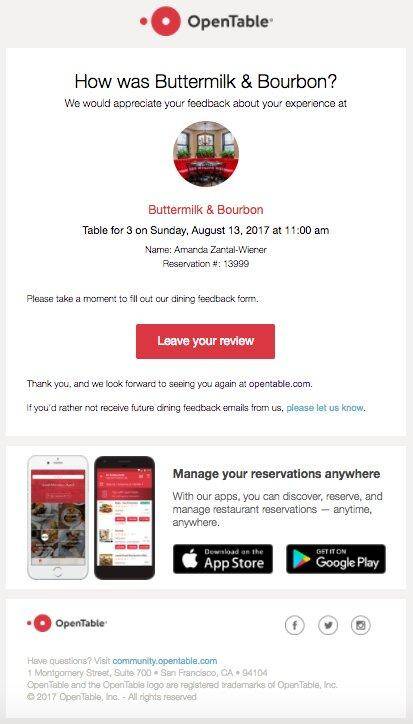
Personalizing your email is crucial because people want value.
This tactic allows for a customer-centric approach that provides readers with a pleasant experience.
And what does this mean for your business? You get better results.
In fact, statistics show that personalizing your email subject lines generates 50% higher open rates.
“Emails with personalized subject lines yield 50% higher open rates.” – Yes Lifecycle Marketing, 2017
To personalize your email, real estate agents have to segment your subscribers into a more detailed list which we will discuss in our next tip.
5. Segment and automate
Email list segmentation refers to the process of dividing your subscriber list into smaller audiences or “segments.”
Email marketing for real estate should divide them based on a set of rules to better target your audience’s interests.
There are many ways to segment your subscribers. But the best way to do it is segmenting by behavior.
In behavioral segmentation, your subscribers are the ones triggering the segment based on real actions.
This makes it the most powerful way to segment because you get insights into how users “behave” on your website.
Email list segmentation is key to delivering the right, personalized content to the right recipient. Yet 50.4% of email marketers don’t segment their email list at all.- Get Response
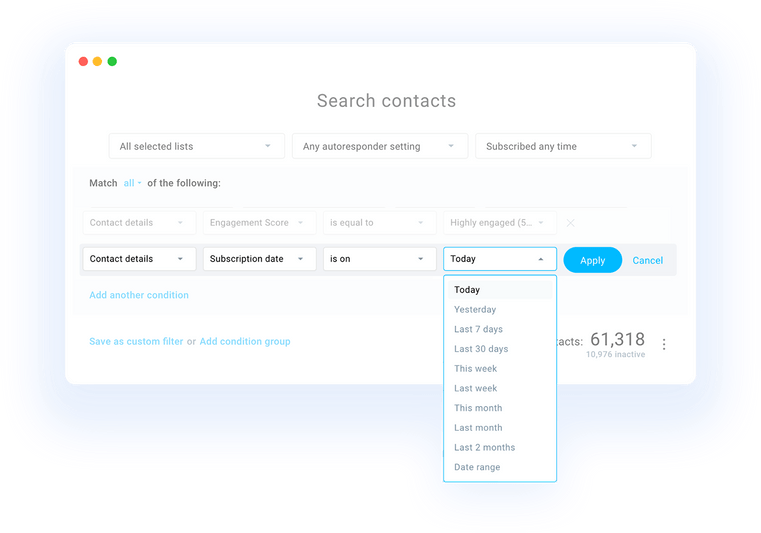
For instance, if a new user visits your website for the first time, you can trigger an email automation workflow to send him a welcome note.
You can also add him to your segments for later engagement.
With behavioral segmentation, email marketing for real estate can create custom emails for first-time visitors, users who have searched for or purchased a product, and people who abandoned the booking page, among others.
Allowing real estate agents to eliminate sending random emails whose content is likely to cause your potential customers or clients to unsubscribe.
Both behavioral segmentation and automation can be done using software like MailerLite, Drip, and HubSpot.
6. Complement your landing page
Email campaigns do not end with a reader clicking the email.
Often, the goal is for your readers to reach a certain landing page.
For instance, you have a one-time offer for your customers.
You managed to get their full attention so that they would eagerly click on your call to action.
Now, imagine the horror on their face when they get redirected to a landing page that looks completely different from your email.
Worst, the page does not contain the offer at all.
It scares people off and adds unnecessary friction. And that is bad email marketing strategy.
That said, ensure that you take the same effort in making your landing page just like how you did with your email.
And if you require people to carry out a specific action, make sure it is simple enough to understand in both your email and landing page.
7. Create campaigns around your brand image
When creating your email marketing for real estate campaigns, agents should craft messaging with your brand image in mind.
From your welcome email, booking confirmation to your thank you note, and updates, everything in the campaign must be built around the image you are trying to create.
This is especially true for long-term email campaigns.
Doing so paints a clearer identity for your brand and gives you a deeper understanding of the message you are trying to convey.
The more real estate agents get familiar with your brand, the more it shows in your future content pieces.
8. Create A Click-Worthy Subject Line
Your subject line will likely be seen 80% of the time but only clicked on less than 10% of the time.
Those numbers fluctuate and will likely get worse over time.
You must create a subject line that piques attention and makes them want to learn more.
It is said that pro writers will create 50+ in order to narrow down one that will lead subscribers to click.
So you should at least create a few options since the first idea is likely not the best option for your subject line.
9. A/B Test
The final tip in the list is to A/B test your emails.
A/B testing allows you to identify what aspects of the email resonate the most with your audience.
To test, create two versions of the same email campaign.
Tweak one variable you want to assess, which can be the email’s subject line, body, CTA, or the use of visuals.
Then, send it across sample groups equally and randomly.
The version with more open and click-through rates indicates what works well for your business.
Just ensure that you’re running one test at a time to get valid results.
Email Marketing and Branding
Brand awareness refers to how well your consumers recognize your brand.
The more familiar your target audience is with your brand, the more likely they will do business with you.
Email marketing can increase all levels of brand awareness when done correctly.
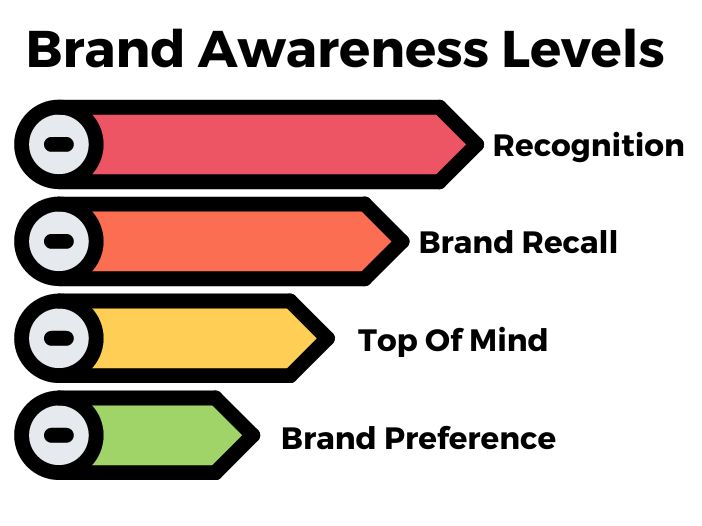
And what better way to build consumer familiarity than email marketing?
It is not social media where only a small percentage of your followers will see your post.
It is not SEO because the likely hood of them returning to your website to book an appointment is extremely low.
Email marketing is one of the most cost-effective digital channels available today.
It is not only a low-cost strategy to get the word out about your business but also offers one of the best ROIs for your dollar.
“Email marketing generates an average of $42 for every $1 spent.” — Data & Marketing Association, 2019
Second, email marketing is the only digital channel to provide direct and regular interactions with your audience.
When a website visitor subscribes to your email list, he becomes a valuable lead that shows a desire to engage with you.
You can target this individual with an email to turn him into a paying and loyal customer.
The great part is: you can target him in the place they visit daily—his inbox.
Email marketing for real estate is the only way to have this kind of opportunity.
That said, if you want to succeed in your business, you have to focus on perfecting your marketing plan by optimizing your email strategy.

Email Marketing for Real Estate Must Be Leveraged To Increasing Home Sales
Email marketing for real estate is a powerful tool.
The fact that it’s a direct form of communication makes it one of the most intimate ways to interact with clients and prospects.
This guide showed you how to make email marketing work for your business by optimizing each email campaign you send.
By following the tips above, you can create a strategy that’s tailored to your business goals and increase your leads and home sales.
Email marketing for real estate is going to continue to evolve and change.
The agents and brokers that start taking email marketing seriously and optimizing their campaigns will be the ones that succeed in the long term.


